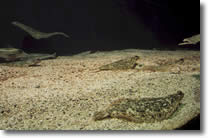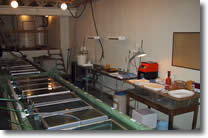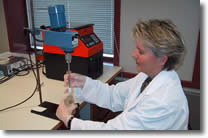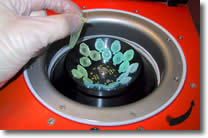 |
 |
||||
Biomarkers
Biomarkers to be used for national or international monitoring programmes should be subject to appropriate internal and external Analytical Quality Control (AQC), particularly as this is a requirement for submitting data to the ICES database. The role of AQC will take on an even greater importance with the use of biological effect methods for monitoring GES (Descriptor 8) in the EU MSFD.
The quality assurance programme for the harmonisation of biomarker responses in aquatic species is led by the Norwegian Institute for Water Research (NIVA), Norway. The main component of the programme involves an inter-calibration using prepared standard samples.
Selected biomarkers for 2018-2019
The biomarkers selected for ring testing in 2018 -2019 include the following:
- Micronuclei formation in mussel haemocytes.
- PAH metabolites in fish bile
- Ethoxyresorufin O-deethylase (EROD) activity + Protein measurement
Micronuclei formation in mussel haemocytes
The frequency of MN is regarded as an important tool for in situ monitoring of genotoxicity. Micronuclei (MN) are chromatin-containing structures that are surrounded by a membrane and have no detectable link to the cell nucleus. As an index of chromosomal damage, the MN assay is based on the enumeration of downstream aberrations after DNA damage and reveals a time-integrated response to complex mixtures of pollutants.
In the 2018-2019 ring test, over 150 photographs of stained haemocytes will be distributed to the participating laboratories for assessment of 1) micronuclei formation, 2) nuclear buds and 3) bi-nucleated cells.
PAH metabolites in fish bile
The bio-transformation of PAHs by fish reduces the accumulation of these compounds in their tissues. As a result, the concentration of parent PAHs in fish samples does not provide an adequate assessment of PAH exposure. Alternatively, the analysis of PAH metabolites in the bile of fish, is considered to be a very sensitive method for the assessment of PAH exposure in laboratory and field studies.
The determination of the PAH metabolite 1-hydroxyprene will be measured in fish bile samples distributed to the participating laboratories. The ring test is open for the different analytical methods including: GC/MS, HPLC-fluorescence (HPLC-F), fixed wavelength fluorescence (FWF), and synchronous fluorescence spectrometry (SFS).
EROD activity + Protein measurements in fish liver
EROD is a sensitive biomarker of exposure to planar polychlorinated biphenyls (PCBs), polyaromatic hydrocarbons (PAHs) and dioxins that are capable of binding to and activating the arylhydrocarbon (Ah) receptor. EROD measures the enzymatic activity of the CYP1A protein in the microsomal fraction of liver homogenates of fish collected from field samples. Liver samples will be homogenised and the microsomal fraction will be distributed to the participating laboratories for the measurement of EROD activity.
Protein measurement is used to normalise data from various biomarker analyses to total protein content of the sample and proved necessary for proper inter-assay comparison of results. The protein measurement involves the use of a protein colouring dye that may be measured spectrophometrically and related to the colouring of a known protein solution.
Ring test information
The ring test is self-funded and includes no administrative fees. The cost to the participants include only transportation of the prepared sample material and the internal costs of running the biomarker assessment within the laboratory.
A simple report will include the results from all ring test participants (coded to preserve anonymity), and a comparison of performance of the participating laboratories.
To participate please contact: sbr@niva.no
Previous ring tests





